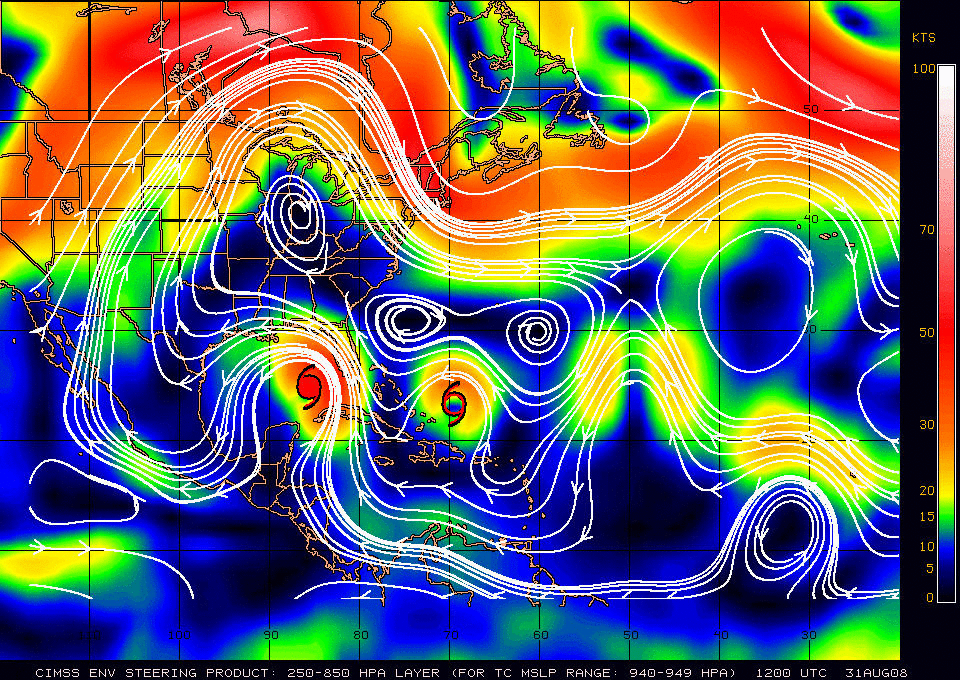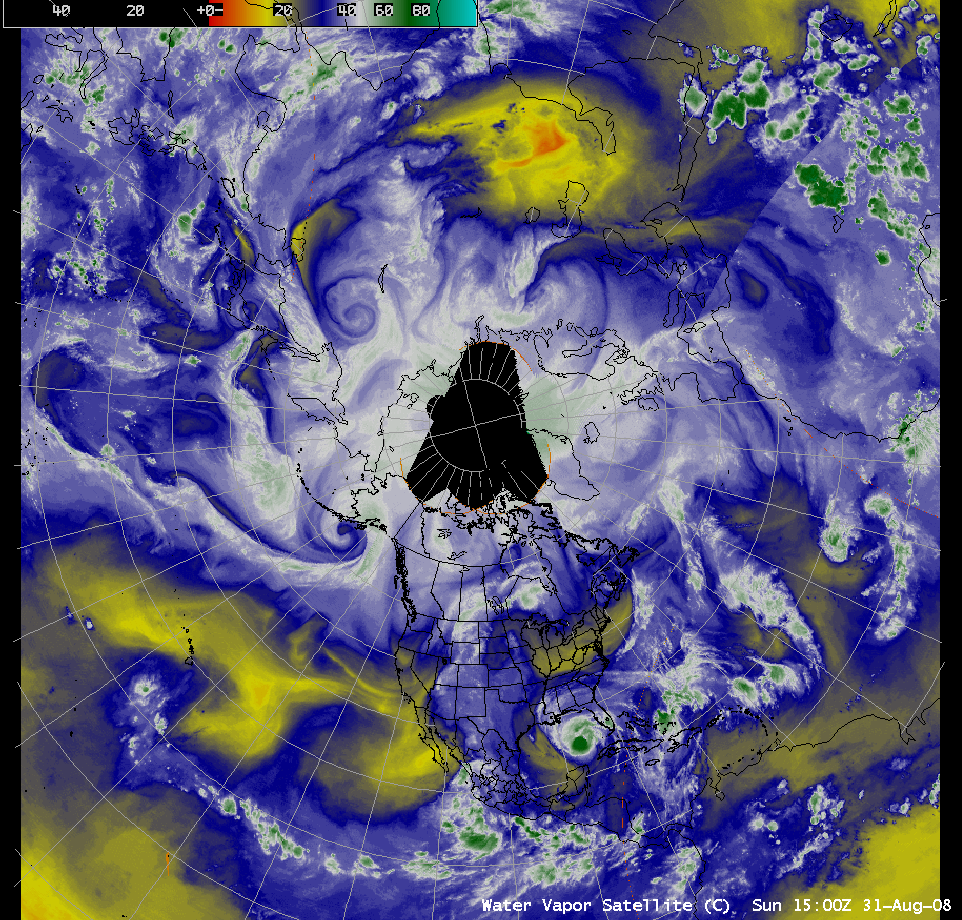CIMSS Environmental Steering product
Jason Dunion (formerly at CIMSS, now at the NOAA/AOML Hurricane Research Division) penned an excellent summary of the utility of the CIMSS Environmental Steering (or Deep Layer Mean Wind) product that is available on the CIMSS Tropical Cyclones site. Satellite-derived Atmospheric Motion Vectors produced at CIMSS are in important inputs to these environmental steering flow products. With Hurricane Gustav, Tropical Storm Hanna, Hurricane Ike, and Tropical Storm Josephine all in the Atlantic basin, Jason noted the following interactions between the steering flow patterns and the motion of those 4 tropical cyclones during the first few days of September 2008:
03 September:
– Gustav has made landfall and helps build ridge #1 to its east
– big ridge #2 is located north-northeast of Ike04 September:
– gigantic low over Canadian Maritimes lifts out;
– ridge #1 slides to the east, ridge #2 slides to the westLate 04 September to early 05 September:
– ridge #1 & ridge #2 link to form a sprawling ridge to the north of Ike
– Ike is stuck in northwesterly steering flow until that “ridge linking”, and then starts a turn to the west05 September:
– ridge #1 and ridge #2 consolidates and parks to the north-northwest of Ike; Ike then quickly comes into a southwesterly steering flow
– Hanna is forced “up the alley” between ridge #1/#2 and a trough approaching from the west
– Josephine is pushed to the northwest by the deep flow (shallow Deep Layer Mean is more of a west-southwesterly flow); Josephine then deteriorates as southwesterly wind shear increases
The corresponding 3-hourly images of the AWIPS Northern Hemisphere water vapor channel composite are shown below, covering the period 01-05 September 2008.



